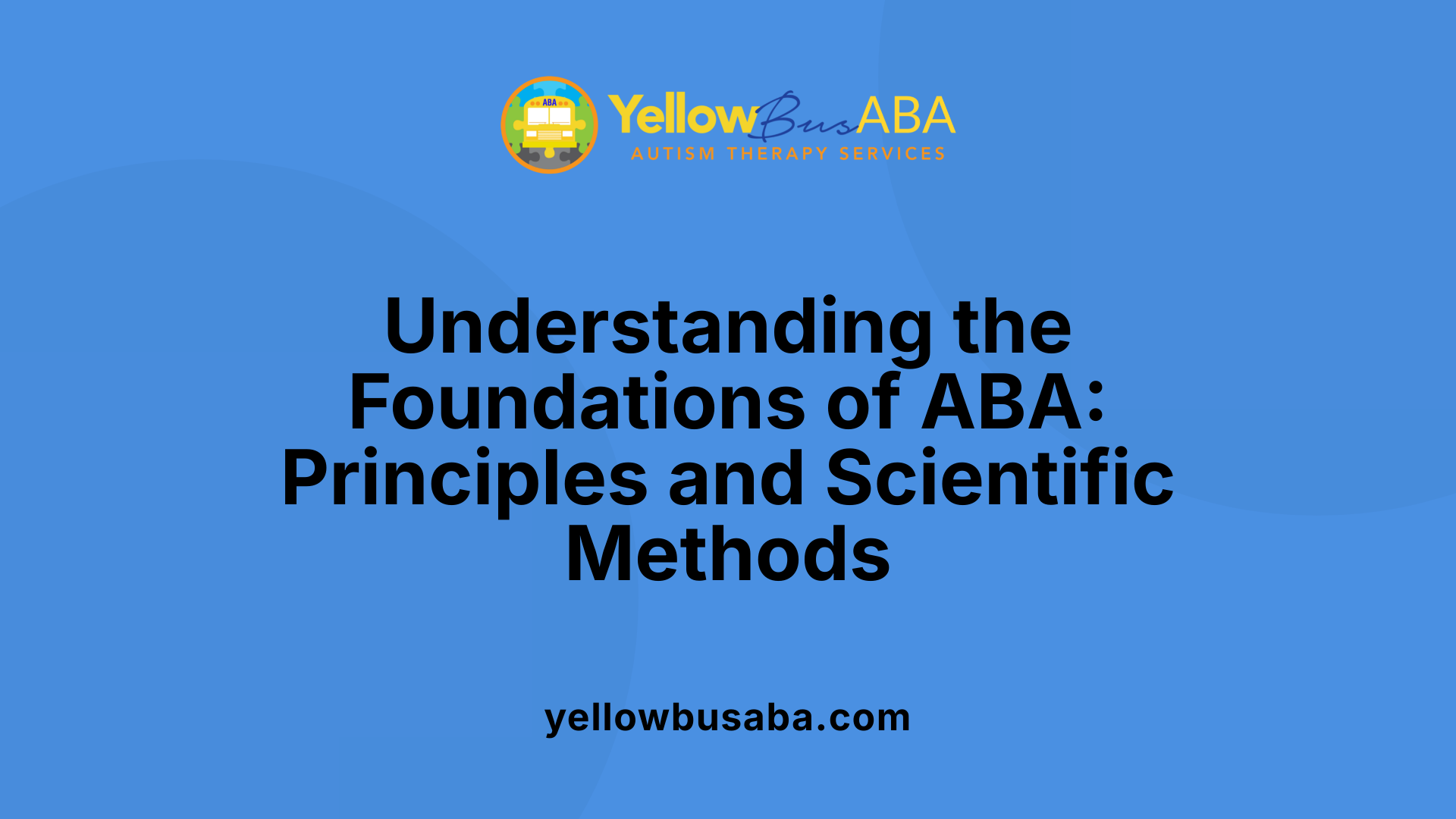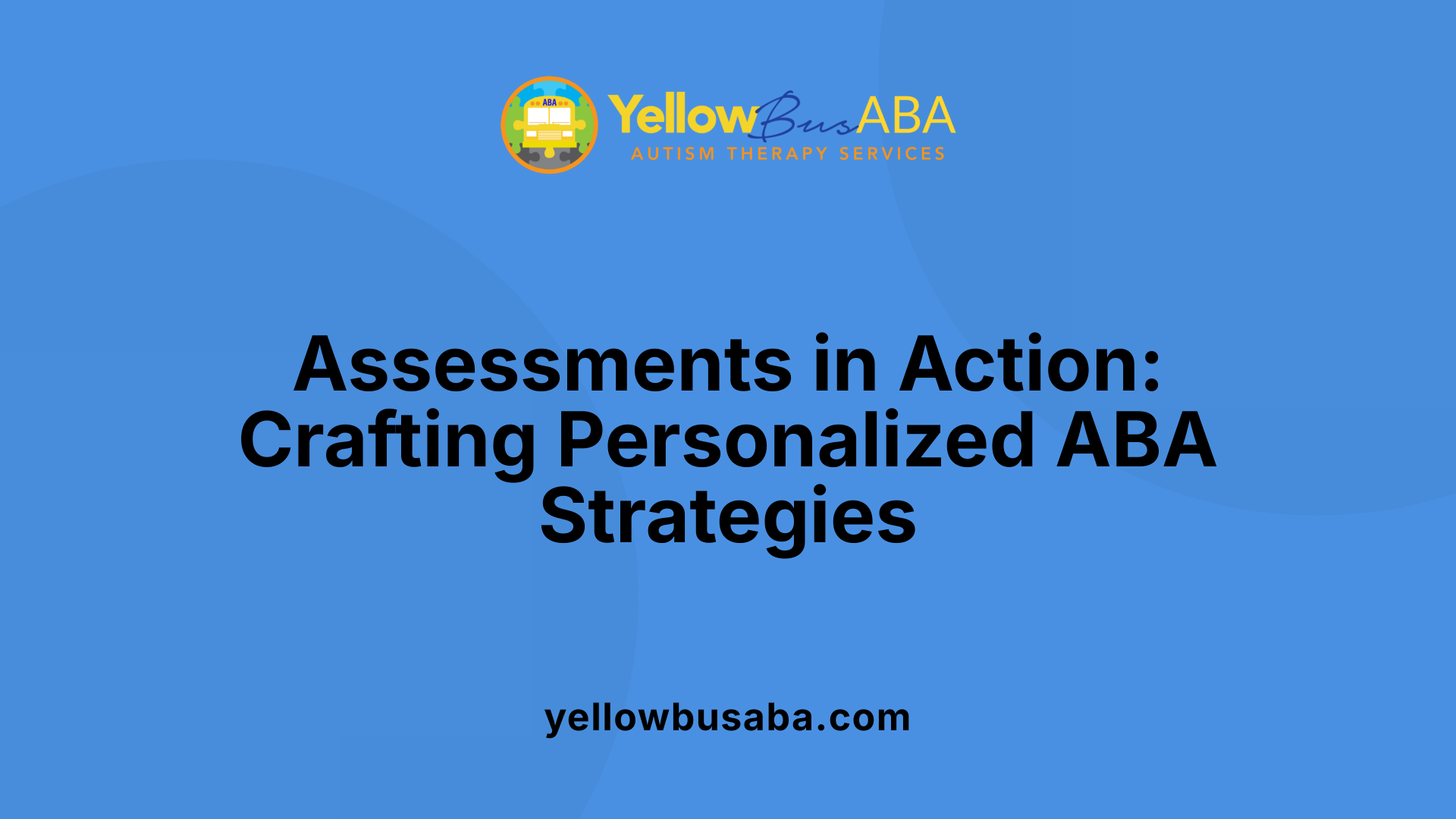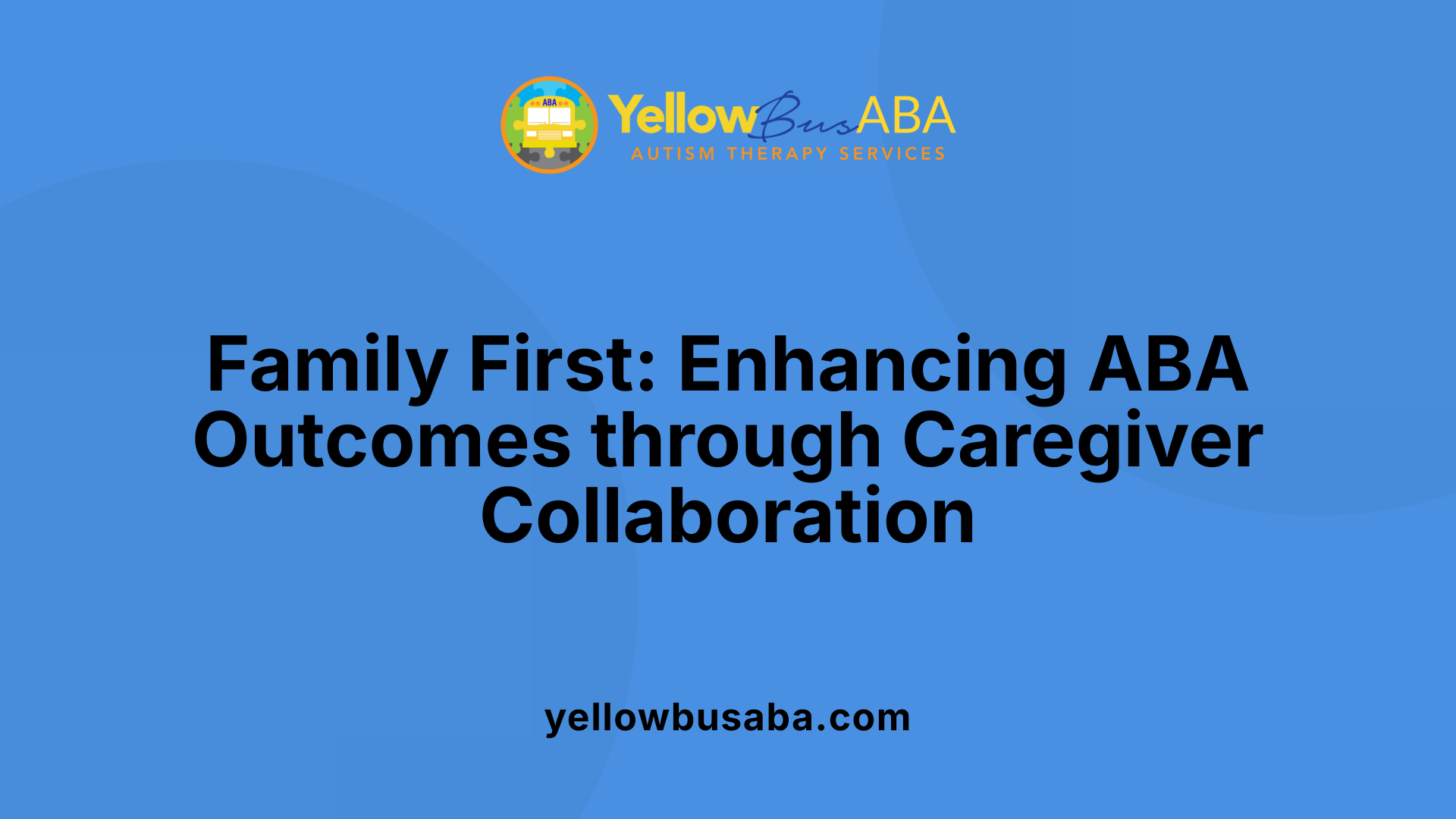An Overview of ABA Process and Its Significance
Applied Behavior Analysis (ABA) is a science-driven, highly individualized therapy that seeks to improve behaviors and skills essential for daily functioning, particularly for individuals with autism spectrum disorder (ASD). Central to effective ABA therapy is the comprehensive assessment process, which informs all subsequent treatment planning and interventions. Understanding how assessments work, the techniques employed, and the roles of different professionals involved provides clarity on how ABA fosters meaningful change.
Core Principles and Scientific Basis of ABA

What is the science of learning and behavior?
Applied Behavior Analysis (ABA) is founded on the scientific understanding of how learning occurs through observable behaviors and their relationship with the environment. By studying these interactions, professionals can develop techniques to promote positive changes. ABA relies on principles like reinforcement—where beneficial behaviors are encouraged—and the systematic analysis of behavior patterns.
This science emphasizes careful observation, measurement, and analysis to understand why behaviors happen and how to modify them effectively. Its evidence-based approach ensures that interventions are grounded in empirical data and tested methods.
How are behavior functions understood?
Understanding why a behavior occurs is essential in ABA. It involves analyzing antecedents—what triggers the behavior—and consequences—what maintains or discourages it. Behavioral functions typically fall into categories, such as attention-seeking, escape, access to tangible items, or sensory stimulation.
Functional Behavior Assessments (FBAs) are used to explore these functions. By carefully observing behaviors, identifying triggers, and evaluating environmental factors, practitioners can develop targeted interventions. This understanding helps in creating strategies that replace harmful behaviors with adaptive ones while considering the individual’s unique motivations.
What techniques are used for behavior modification?
Behavior modification in ABA employs several techniques tailored to individual needs. Positive reinforcement is a cornerstone, rewarding desirable behaviors to increase their occurrence. Prompting strategies help learners execute new skills, while fading gradually reduces assistance as independence grows.
Other methods include discrete trial training, where skills are taught through repeated structured trials, and naturalistic teaching, which capitalizes on everyday environments. Data collection tools like ABC (antecedent-behavior-consequence) charts support ongoing evaluation.
Additionally, individualized behavior support plans incorporate strategies to prevent challenging behaviors, promote skill generalization, and ensure progress over time. Flexibility and creativity in applying these techniques are vital to meet each person's unique needs and promote meaningful learning.
The Role of Developmental and Behavioral Assessments

What are the methods and techniques used in ABA assessments?
Applied Behavior Analysis (ABA) assessments utilize a variety of methods and techniques to gather vital information about an individual's behaviors, skills, and needs. These include direct observation of behaviors across different settings, which helps identify patterns and environmental influences.
Structured interviews are conducted with parents, caregivers, and teachers to obtain insights into the child's behavior in various contexts. Standardized assessment tools, such as surveys and rating scales, are administered by licensed professionals like Board Certified Behavior Analysts (BCBAs) to evaluate specific skills and behaviors.
Reviewing existing records—including medical histories, educational reports, and previous therapy evaluations—is also a common part of the assessment process. Data collection often involves initial phone consultations, in-person observations, and online data entry systems, involving active participation from families. This comprehensive approach ensures a well-rounded understanding of the individual’s strengths and challenges.
The information from these assessments forms the basis for creating personalized behavior support plans (BSPs) and determining appropriate intervention levels, clearly guiding the subsequent therapy process.
What are the five phases of an ABA assessment?
The assessment process in ABA generally follows five distinct phases:
- Screening and General Disposition: Overview to determine if further assessment is needed.
- Defining and Quantifying Problems: Clarifying what behaviors are problematic and their severity.
- Pinpointing Target Behaviors: Identifying specific behaviors to address.
- Monitoring Progress: Ongoing data collection to track changes over time.
- Follow-up Evaluations: Post-intervention assessments to evaluate effectiveness.
This structured process ensures systematic data gathering and facilitates targeted intervention planning.
How does an assessment inform treatment planning and goal setting in ABA?
Assessment is fundamental to effective treatment planning in ABA. By collecting detailed, systematic data on a person's current behaviors and skills, practitioners can identify the functions underlying problematic behaviors and pinpoint areas for growth.
Tools such as Functional Behavior Assessments (FBA) analyze antecedents, behaviors, and consequences to understand what triggers certain actions. The insights gained guide the development of individualized treatment plans (ITPs) and specific Behavior Intervention Plans (BIPs) that are realistic and measurable.
Goals are crafted using the SMART framework—making them Specific, Measurable, Achievable, Relevant, and Time-bound—to ensure clarity and progress tracking. Regular reassessment allows for data-driven modifications, promoting the generalization and maintenance of new skills.
Ultimately, assessment ensures that therapy targets meaningful, functional improvements aligned with the individual’s unique needs.
What is the process of ABA therapy and how are assessments involved?
ABA therapy is a rewards-based approach designed to reinforce positive behaviors and encourage their recurrence. It begins with comprehensive assessments that identify the child's current skill levels and behavioral challenges.
These assessments include reviewing diagnostic reports, conducting functional evaluations, and analyzing behavior patterns. Based on this data, a personalized treatment plan is created, emphasizing specific goals in communication, social skills, and adaptive behaviors.
Trained Registered Behavior Technicians (RBTs) implement interventions under supervision, with active involvement from families to improve consistency. Data collection continues throughout therapy—tracking frequency, duration, and context of target behaviors—which informs ongoing progress assessments.
Regular analysis of collected data allows therapists to adjust intervention strategies, ensuring continued growth. Reports generated from assessments communicate progress to parents and other stakeholders, fostering collaborative, tailored care.
Who is involved in ABA assessments and what data is collected?
A multidisciplinary team usually conducts ABA assessments, including BCBAs, therapists, direct-care staff, teachers, and caregivers. Each provides valuable input and participates in data collection.
Data gathered covers a broad spectrum: direct behavior observations, environmental cues, antecedents, consequences, and responses to interventions. Standardized assessments, structured interviews, and medical or educational records further enrich the data pool.
Areas assessed include communication skills, social interactions, academic abilities, adaptive functioning, and specific targeted behaviors. Data collection methods include frequency counts, duration recordings, interval recording, ABC (Antecedent-Behavior-Consequence) data, and collection of permanent products.
This comprehensive data collection helps tailor treatment plans, monitor effectiveness, and make necessary adjustments to meet the individual’s evolving needs.
| Topic | Details | Additional Notes |
|---|---|---|
| Assessment Methods | Direct observation, structured interviews, standardized tools, record review | Ensures thorough understanding of behaviors and skills |
| Phases of Assessment | Screening, problem definition, pinpointing behaviors, progress monitoring, follow-up | Structured approach for comprehensive evaluation |
| Informing Treatment | Data analysis for goals, function, and behavior patterns | Data-driven personalized plans |
| Data Collection Techniques | Frequency, duration, ABC, skill tracking | Objective measurement of progress |
| Team Involved | BCBAs, therapists, caregivers, teachers | Multidisciplinary insights |
Importance of Family and Caregiver Involvement
 Family-centered assessments play a vital role in ABA therapy, emphasizing the importance of actively involving family members and caregivers throughout the evaluation and intervention process. They provide a comprehensive understanding of the child's daily routines, environment, and potential triggers for behaviors, ensuring that treatment plans are relevant and effective.
Family-centered assessments play a vital role in ABA therapy, emphasizing the importance of actively involving family members and caregivers throughout the evaluation and intervention process. They provide a comprehensive understanding of the child's daily routines, environment, and potential triggers for behaviors, ensuring that treatment plans are relevant and effective.
Caregiver interviews and reports are fundamental tools in this approach. During these interviews, parents, guardians, or other caregivers share detailed information about the child's developmental history, behavioral patterns, strengths, and challenges. These conversations often include review of medical records, previous interventions, and daily activity logs. Caregivers can also provide insights into the child's preferred activities and reinforcers, which are crucial for designing engaging and motivating therapies.
Collaboration between the therapy team and families is essential for creating effective and sustainable ABA programs. This partnership involves consistent communication, training caregivers on reinforcement techniques, and involving them in goal setting and progress monitoring. When families are actively engaged, they better understand the therapeutic process and can reinforce skills outside of formal sessions.
The role of family in assessment and intervention includes:
- Providing detailed context about the child's behavior in natural settings.
- Participating in structured interviews and functional analyses.
- Contributing to the development of Behavior Support Plans (BSPs).
- Implementing learned strategies at home to promote generalization of skills.
- Monitoring progress and reporting changes or concerns.
Using a collaborative approach ensures that interventions are personalized, culturally sensitive, and aligned with family priorities, which enhances the effectiveness of ABA therapy.
| Aspect | Description | Example Methods |
|---|---|---|
| Family-Centered Assessments | Focuses on involving family input from initial evaluation through ongoing treatment | Parent questionnaires, home observations, family interviews |
| Caregiver Interviews and Reports | Collects detailed insights into behaviors, routines, and preferences | Structured interviews, behavior logs, rating scales |
| Collaboration for Effective Therapy | Establishes partnership between therapists and families to ensure consistency and relevance | Regular meetings, training sessions, shared goal setting |
In conclusion, family and caregiver involvement in ABA assessments creates a strong foundation for individualized, effective, and sustainable intervention programs, ultimately facilitating better outcomes for children across developmental and behavioral domains.
The Significance of Holistic and Contextual Data Collection

How do environmental factors influence ABA assessments?
In ABA, understanding the environment where behaviors occur is essential for accurate assessment and effective intervention. Environmental factors include physical surroundings, available resources, and stimuli present during assessment sessions and daily activities.
By observing how different settings — such as home, school, or community spaces — impact behavior, clinicians can identify triggers or supports that influence functioning. For example, a child might display more challenging behaviors in noisy or chaotic settings, which requires adjustments in intervention strategies.
Comprehensive assessment involves multiple observations across these settings to gather a full picture of environmental influences. This helps ensure that interventions are contextually appropriate and more likely to generalize across environments.
What role does family context and routines play in ABA assessments?
Family routines and daily schedules are crucial in shaping behaviors and thus are a core component of comprehensive assessments. Engaging caregivers through interviews, logs, and direct observations provides insight into typical routines, natural reinforcers, and family dynamics.
Understanding the family's daily pattern helps professionals tailor interventions that fit seamlessly into existing routines, making them more sustainable. For example, a child's communication goals can be integrated into meal times or play activities that families already value.
Including family input also assists in setting realistic, meaningful goals aligned with family priorities, which enhances motivation and compliance.
Why are cultural considerations important in ABA evaluations?
Cultural values, beliefs, and practices significantly influence behavior and perceptions of therapy. Recognizing these factors ensures assessments are respectful, relevant, and effective.
For instance, communication styles vary across cultures, affecting how social behaviors are expressed or interpreted. Cultural norms may also influence disciplinary practices or caregiver expectations.
Assessors should be culturally competent, adapt assessment tools when necessary, and involve families in decision-making processes. This approach fosters trust, improves engagement, and leads to more culturally aligned treatment plans.
What methods and techniques are used in ABA assessments?
ABA assessments employ a variety of methods to gather all necessary data:
- Direct observations: Monitoring behaviors in different settings to identify patterns, triggers, and consequences.
- Structured interviews: Talking with caregivers, teachers, and the individual to gather contextual information.
- Standardized assessments: Using validated tools such as the Vineland-3, VB-MAPP, ABLLS-R, and AFLS to evaluate skills and developmental levels.
- Record reviews: Analyzing medical, educational, and therapy records to understand history and previous interventions.
- Functional Behavior Assessments (FBA): Conducting detailed analyses to identify antecedents, behaviors, and consequences.
These methods provide a multi-layered understanding of the individual’s behaviors, strengths, and needs.
What are the five phases of an ABA assessment?
An ABA assessment typically follows five stages:
- Screening and general disposition: Initial gathering of basic information to determine the need for formal assessment.
- Defining and quantifying problems: Clarifying the behaviors of concern and their frequency.
- Pinpointing target behaviors: Selecting specific skills to develop or behaviors to reduce.
- Monitoring progress: Collecting baseline data and ongoing measures.
- Follow-up evaluations: Assessing long-term outcomes and plan adjustments.
Each phase ensures thorough evaluation, leading to tailored, effective intervention plans.
How does assessment guide treatment planning and goal setting?
Assessment provides a detailed snapshot of a child’s current skills and behaviors, setting the foundation for treatment plans. It helps identify individual strengths and deficits across communication, social skills, adaptive functioning, and more.
Using assessment data, practitioners develop specific, measurable goals (aligned with the SMART framework) targeting essential skills like language development or social interactions. This ensures interventions are relevant, structured, and achievable.
Regular assessments measure progress and inform necessary modifications, ensuring continued alignment with evolving needs.
What is the process of ABA therapy and how are assessments involved?
ABA therapy starts with comprehensive assessment—covering developmental, behavioral, and medical histories—to develop personalized treatment outlines. These assessments identify the individual’s unique needs, strengths, and challenges.
Interventions are implemented by trained technicians, with data collection ongoing through techniques like frequency recording, ABC data, and task analysis.
The continuously gathered data guides therapy adjustments, ensuring that interventions remain effective and aligned with goals. Assessment reports also communicate progress to families and other professionals.
Who is involved in ABA assessments and what data is collected?
A multidisciplinary team usually conducts ABA assessments, including:
- Board Certified Behavior Analysts (BCBAs): Lead the assessment process.
- Therapists and RBTs: Collect observational data.
- Caregivers and teachers: Provide vital information about behaviors in natural settings.
- Medical and educational professionals: Offer records and evaluations.
Collected data covers behaviors, environmental contexts, antecedents, consequences, skills, and challenges. Tools used include observational methods, rating scales, standardized tests, and reviews of records.
This comprehensive data foundation supports tailored intervention plans, progress tracking, and outcome measurement.
The Path Toward Tailored and Effective ABA Interventions
Understanding the process of ABA assessments and evaluations reveals the meticulous and data-driven foundation upon which successful therapies are built. From initial broad screenings to detailed functional analyses and developmental evaluations, each step involves a collaborative effort among professionals, individuals, and families. The assessments’ comprehensive nature—covering environmental, behavioral, developmental, and contextual factors—ensures that interventions are personalized, targeted, and capable of fostering meaningful progress. As ABA continues to evolve as a scientifically supported and versatile therapy, an appreciation of its assessment processes underscores the importance of systematic data collection, ongoing monitoring, and family involvement in creating lasting change and supporting individuals to reach their fullest potential.
References
- Applied Behavior Analysis (ABA) | Autism Speaks
- ABA Assessment: What is It? | Circle ABA - The Autism Impact Circle
- Understanding the ABA Therapy Process
- Assessment Strategies for Clients with Comorbidities - How to ABA
- Why An ABA Therapy Assessment is a Crucial Step
- Understanding Assessment and Goal Setting in ABA Treatment
- Details about the assessment process when it comes to ABA
- Applied Behavior Analysis (ABA) Therapy - All You Need to Know






